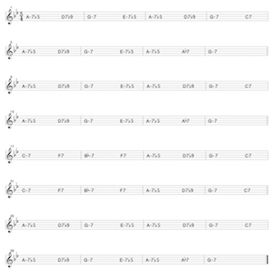
Improvising on major scales and blues scales
background

There are several ways to approach a chord progression:
- vertical soloing:
In this approach, the chords are central, and you play "per chord." The player looks for beautiful patterns and lines for each chord and finds suitable connections to move to the next chord. For such improvisation, you need a solid understanding of chords and an extensive toolbox of patterns.
- horizontal soloing:
In this approach, the soloist focuses more on the key and the progression of a song, using the chords to figure out which scale(s) can be used to improvise over the piece. This makes it easier to play melodic (horizontal) lines. My simplification is based on this approach.
Often, there is a strong emphasis on following (and making evident) all chord transitions. This, in my opinion, unnecessarily complicates the life of a beginning player. Most music is not composed starting with a chord progression but with a melody or lyrics, with chords added later.
Instead of using the chords as the primary guide, I break down a progression into a series of blocks with "usable notes" (major scale, minor scale, blues scale). This simplifies your improvisation and allows you to explore a song more easily. Then, you can expand it with embellishments and specific (deviating) notes from the chords.
back
simplified
before:

after:







